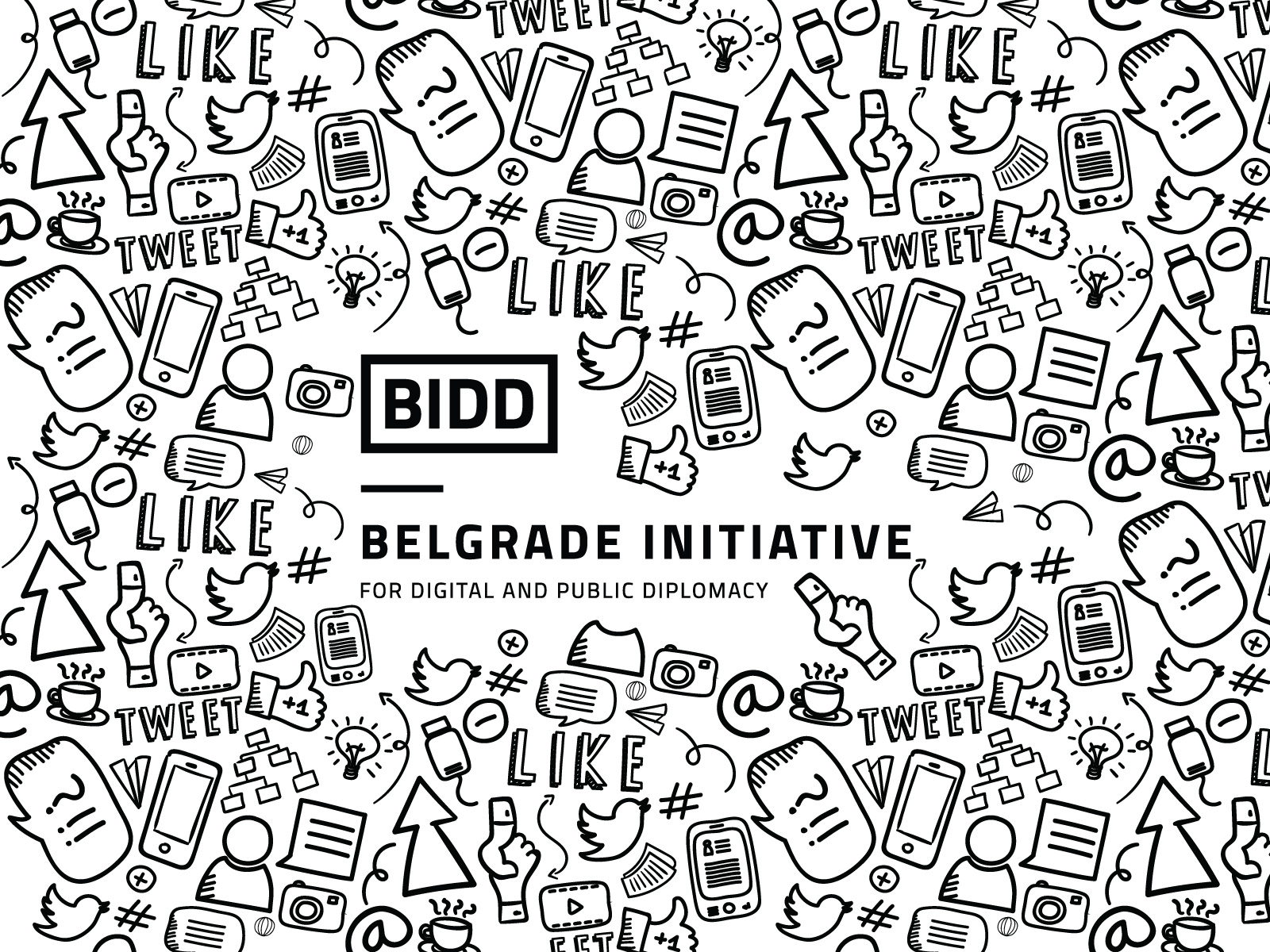On Gastrodiplomacy Campaigns
An Interview with U.S. Foreign Service Officer Mary Jo Pham
U.S. Foreign Service Officer Mary Jo A. Pham is an expert in gastrodiplomacy. Pham has a MA in International Communication from the School of International Service at American University and a BA in International Relations from Tufts University. Pham sat down with Public Diplomacy Magazine editors Shannon Haugh, Bryony Inge, and Lauren Madow to discuss several case studies on gastrodiplomacy, the elements of a successful gastrodiplomacy program, and who should be practicing gastrodiplomacy.
This interview was conducted in a private capacity. All opinions and views expressed are her own and do not necessarily reflect any policy or view of the U.S. Department of State or the U.S. government.
Public Diplomacy Magazine: Gastrodiplomacy is defined differently by different actors. What is your definition of gastrodiplomacy?
Mary Jo Pham: I look at it as a government practice of exporting its national culinary heritage, under the umbrella of cultural diplomacy. A government would pursue gastrodiplomacy as part of its effort to do several things. One is to raise national brand awareness. Two is really to encourage economic investment and trade within its borders, and also to foster that outside of its borders with exports. And then finally, it’s for governments who seek to engage on a cultural and personal level with everyday diners.
PDM: Could you talk more about how food can communicate national identity and cultural heritage, and raise country brand awareness?
MJP: First of all, when it comes to gastrodiplomacy, the superficial tier is, look at the national brand. Look at, for example, South Korea, because everybody thinks South Korea is an excellent example of a successful gastrodiplomacy campaign. They have two products they are exporting that are now being sold in Costco across the United States. The packaging looks great and everything is wonderful.
And then on the back of the packaging it tells the story of the history of mandu, or Korean dumplings, and how the dumplings came about. It’s a tiny slice of history, but it gives consumers a new word in their lexicon of food. No longer are dumplings just dumplings. And they’re not gyoza, which is the Japanese term for dumplings. And they’re not Chinese dumplings, but they’re mandu, Korean dumplings, something very distinctive. When it comes to communicating national identity, governments that are beginning to include cultural tidbits like that are taking a step in the right direction.
The agriculture of a place and the ingredients it provides matter as well. One of the things I have written about before is what kind of food is planted, where it’s planted, and how it’s planted. It’s all historically so deeply interwoven with civilization, a particular society, a local culture that is now connected to a national culture, which can then be connected to a foreign culture through gastrodiplomacy…Consider for example the story of a wine written on the wine label. Or, when you go to Trader Joe’s, and there’s a note about the history of a wine. The land in which food is produced can’t be divorced from the local culture there.
PDM: What would you say are the elements of a successful gastrodiplomacy campaign, and what are the goals of such a campaign?
MJP: A campaign can be driven by tourism, and it can be driven by economic interests. Consider South Korea, for example. I was reading a South Korean newspaper that said by 2017, the South Korean agricultural ministry for fisheries, exports, and forestry are projecting their food and fish exports will double…That’s something the government is trying to work on right now. I think they are investing $2 billion in improving their farming technology to contribute to the global food basket. When it comes to a recipe for success of a gastrodiplomacy campaign, it really depends on the country and whatever goals it has.
The second most important thing is to know your history, your food, and knowing what sets you apart. Governments who are interested in this really need to know what would make sense to share with the world. Third, countries need to be sure they have their resources available and the systems in place that allow them to pursue a successful gastrodiplomacy campaign. Gastrodiplomacy is not just about saying, “here’s our story, here’s our national narrative, look at our history, we have a rich history of farming, we hope you like our food products, please enjoy.” That’s not enough. I don’t think that’s really gastrodiplomacy, I think that’s PR… They need to make sure they have people inside the government and outside of the government. Diplomats are wonderful, and governments have their experts, but then there are people from different communities within different countries such as chefs, artisans, local farmers, nutritionists, food experts, health experts that may not work for the government, but should definitely have a seat at the table when it comes to thinking of ways to publicize the food.
Fourth, governments need to know their audience. Your audience in New York City is going to be completely different from your audience in Spain, and your audience in Spain is going to be completely different from your audience in Saudi Arabia. There are many markets, and some people look at that as a disadvantage. I think that it can be an advantage. Maybe it’s an inconvenience to tailor your product or message about food and a food experience when it comes to gastrodiplomacy for the United States and make it different for Saudi Arabia, but it also provides new opportunities. What interests a market in the United States might not interest a market in Hong Kong.
Finally the fifth point, gastrodiplomacy is not just about putting up a pretty picture. It’s about sustaining not just the narrative, but the conversation and the engagement that needs to take place beyond the initial dining experience. This means building a cycle or even a vertical chain that allows people to first learn about a country and its food product…the consumer must be able to purchase that product, consume it, and then share that product, and then also continue talking about it. The experience needs to be present and relevant. That means governments not only need to set themselves up for success by building a very careful, thorough gastrodiplomacy campaign and supporting it with a national brand. But it also means they need to do other things outside of just directly promoting it. This means maybe doing things that are behind the scenes. It means providing scholarships for your chefs to travel overseas and collaborate and participate in cultural exchanges with other chefs. It means supporting your diaspora overseas.
PDM: In your opinion, what type of nations benefit most from launching a gastrodiplomacy program?
MJP: Countries that may be able to benefit from a gastrodiplomacy campaign are middle powers. An example of a middle power is Thailand. I’m sure you’ve read about and heard about how Thailand launched their Thai Kitchen to the world. The objective of that effort from the Thai government was to, first and foremost, increase the number of Thai restaurants around the world. At the time, there was an estimated 5,000 Thai restaurants globally. After the campaign, the number of restaurants had more than tripled, and still counting. The Thai government recognized they’re a middle power. At home they have a wonderful foundation for tourism. They have a strong interest in promoting tourism at different marketeers- luxury tourism, eco-tourism, tourism for the average backpacker. They knew they had so much to offer domestically at home. They also knew there was a growing interest in Thai food. So thinking about how they could sort of capitalize on this, they structured a gastrodiplomacy campaign that not only boosted the number of Thai restaurants around the world, but in the beginning they set out to help restaurateurs by certifying their Thai restaurants as a great Thai restaurant. They also were able to harness this interest in Thai food overseas by supporting exports of Thai food products that would be made available for Thai restaurants around the world. So not only were they working on building storefronts and restaurants overseas, they were also shoring up the food production at home to help support this initiative overseas.
PDM: Gastrodiplomacy is a fairly new field. What do you think is the future of gastrodiplomacy?
MJP: I always talk about gastrodiplomacy as really important and a very relevant means of communicating important elements of national identity and narrative. But food alone is not going to be the answer for a lot of things. I hope people recognize, governments especially, that a gastrodiplomacy campaign needs to be sustained through other connections to other very important areas of governance, whether that’s through security interests in terms of food security. Countries need to be thinking about conducting diplomacy on many levels, and gastrodiplomacy is one very important element, but it needs to take place in concert with strategic interests in mind. I think sometimes gastrodiplomacy is dismissed as a “kumbaya diplomacy” effort, which it’s not at all. But as long as there’s engagement on the part of government and the diner and consumer, I think it provides a pathway for that sustained dialogue, and that sustained participation in the cycle I mentioned earlier.
Tags: gastrodiplomacy
You can leave a response, or trackback from your own site.









